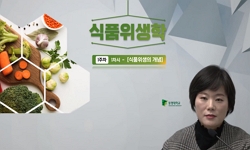Sanitary management practices were assessed to insure the safety of school foodservice, to prevent the outbreak of foodborne illness, and to improve the quality of school foodservice. To accomplish these objectives, a survey was conducted and analyzed...
http://chineseinput.net/에서 pinyin(병음)방식으로 중국어를 변환할 수 있습니다.
변환된 중국어를 복사하여 사용하시면 됩니다.
- 中文 을 입력하시려면 zhongwen을 입력하시고 space를누르시면됩니다.
- 北京 을 입력하시려면 beijing을 입력하시고 space를 누르시면 됩니다.

서울지역 학교급식 위생관리 실태평가 = Assessment of Sanitary Management Practices of School Foodservice Operations in Seoul
한글로보기https://www.riss.kr/link?id=A103701080
-
저자
곽동경 (연세대학교 식품영양학과) ; 홍완수 (동덕여자대학교 식품영양학과) ; 문혜경 (창원대학교 식품영양학과) ; 류경 (동남보건대학 식품영양과) ; 장혜자 (연세대학교 식품영양학과) ; Kwak, Tong-Kyung ; Hong, Wan-Soo ; Moon, Hye-Kyung ; Ryu, Kyung ; Chang, Hye-Ja
- 발행기관
- 학술지명
- 권호사항
-
발행연도
2001
-
작성언어
Korean
- 주제어
-
등재정보
KCI등재
-
자료형태
학술저널
- 발행기관 URL
-
수록면
168-177(10쪽)
- 제공처
-
0
상세조회 -
0
다운로드
부가정보
다국어 초록 (Multilingual Abstract)
Sanitary management practices were assessed to insure the safety of school foodservice, to prevent the outbreak of foodborne illness, and to improve the quality of school foodservice. To accomplish these objectives, a survey was conducted and analyzed on elementary and high school foodservice operations located in Seoul area. A Questionnaire from based on HACCP standards was developed and used for self-reported evaluation of the school foodservice managers on their sanitary management practices. The results were analysed by examining their activities and identifying weaknesses in those activities. The questionnaire was composed of three sectors with all 53 questions; 33 questions for time-temperature management, 5 for personal hygiene and 15 for equipment/facility sanitation. Five-point-scale was used on the questionnaire answers. Among the schools responded,253 (98.4% of the total) were elementary schools and 19 (1.6%) were high schools. Among the three sectors, personal hygiene performance was mostly well conducted by marking average 4.06$\pm$0.57. Equipment/facility sanitation came next by marking average 3.84$\pm$0.53. Time-temperature marked average 3.45$\pm$0.46. “Storage after cooking (2.03$\pm$0.94)”was identified as the least managed activities because the school foodservice operations were not equipped well with hot holding and/or cold holding. “Separate use of sink per usage (3.03$\pm$1.10)” and “proper location of hand washing facility (3.07$\pm$1.13))” were identified as the least practiced activities in equipment/facility sanitation sector. To enhance these practices, proper number of sinks and hand washing facilities should be equipped first within the kitchen area.
동일학술지(권/호) 다른 논문
-
- 한국식품위생안전성학회
- 박석기
- 2001
- KCI등재
-
한국인 평균소비자 및 극단소비자에 대한 소르빈산의 일일 추정섭취량 평가
- 한국식품위생안전성학회
- 박주연
- 2001
- KCI등재
-
청국장 발효 세균의 종류에 따른 청국장 점질물의 항 미생물 활성에 관한 연구
- 한국식품위생안전성학회
- 허성호
- 2001
- KCI등재
-
- 한국식품위생안전성학회
- 박용호
- 2001
- KCI등재




 ScienceON
ScienceON 코리아스칼라
코리아스칼라





